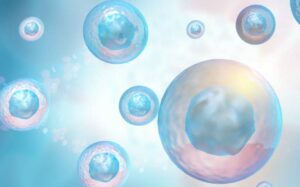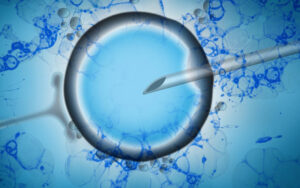Within the framework of the 39th Congress of the European Society of Human Reproduction and Embryology (ESHRE).
- A study presented by the IVI Foundation at the Congress of the European Society of Human Reproduction and Embryology (ESHRE) confirms that a higher concentration of these heavy metals could affect fertility: the results suggested a lower ovarian response and worse embryological and clinical outcomes.
- These levels were observed in follicular fluid, plasma, and urine obtained on the day of ovarian puncture, as well as in the urine sample on the day of embryo transfer.
- Specifically, the presence of non-essential trace elements was studied, including heavy metals such as lead, mercury, and arsenic, as well as other less studied elements such as strontium, tin, cesium, and rubidium.
Industrialization has brought many benefits to society, but it has also contributed to our exposure to a series of environmental factors that can be harmful to our health. Among these consequences, infertility can be found due to continuous exposure to environmental pollutants during our reproductive age.
The study, presented at the 39th ESHRE Congress held in Copenhagen, correlates the concentrations of non-essential trace elements, including heavy metals such as lead, mercury, and arsenic, as well as strontium, tin, cesium, and rubidium.
The results showed that higher concentrations of non-essential trace elements, such as mercury in blood, and another group of less commonly studied non-essential traces, such as strontium, tin, cesium, and rubidium in urine, which can be consumed in the daily diet, were significantly associated with a lower ovarian response and worse embryological outcomes in in vitro fertilization treatment.
Furthermore, higher concentrations of arsenic in urine obtained on the day of embryo transfer notably translated into worse clinical outcomes of in vitro fertilization treatment.
This is confirmed by Dr. Francisco Domínguez, a researcher at the IVI Foundation and supervisor of the study. He states, “Without any doubt, these results suggest a direct impact between the levels of non-essential trace elements and the outcomes of IVF treatment. It is still early to determine their exact source, but we can speculate that they could be associated with common components in our diet, such as mercury in fish, excessive rice consumption that can lead to arsenic levels, or the possible presence of strontium in cereals, leafy vegetables, and dairy products, for example. In addition to this, we need to consider our exposure to these non-essential traces in the environment.”
To analyze the presence of these traces, they were examined in follicular fluid, plasma, and urine obtained on the day of ovarian puncture, as well as in urine obtained on the day of embryo transfer.
Specifically, the cases of 51 women with an average age of 39 were studied, of which half were non-smokers. All of them underwent IVF treatment with the transfer of a single euploid blastocyst – with the correct number of chromosomes – at IVI clinics in Spain.
In order to expand the results and make recommendations, Dr. Domínguez emphasizes that “these results are preliminary and need to be confirmed in a larger group of participants.” The reason is to understand in detail the underlying mechanisms behind these associations. “Not all individuals react the same way to exposure to these elements, and it is also necessary to correlate other variables associated with environmental and lifestyle factors,” concludes the researcher.





